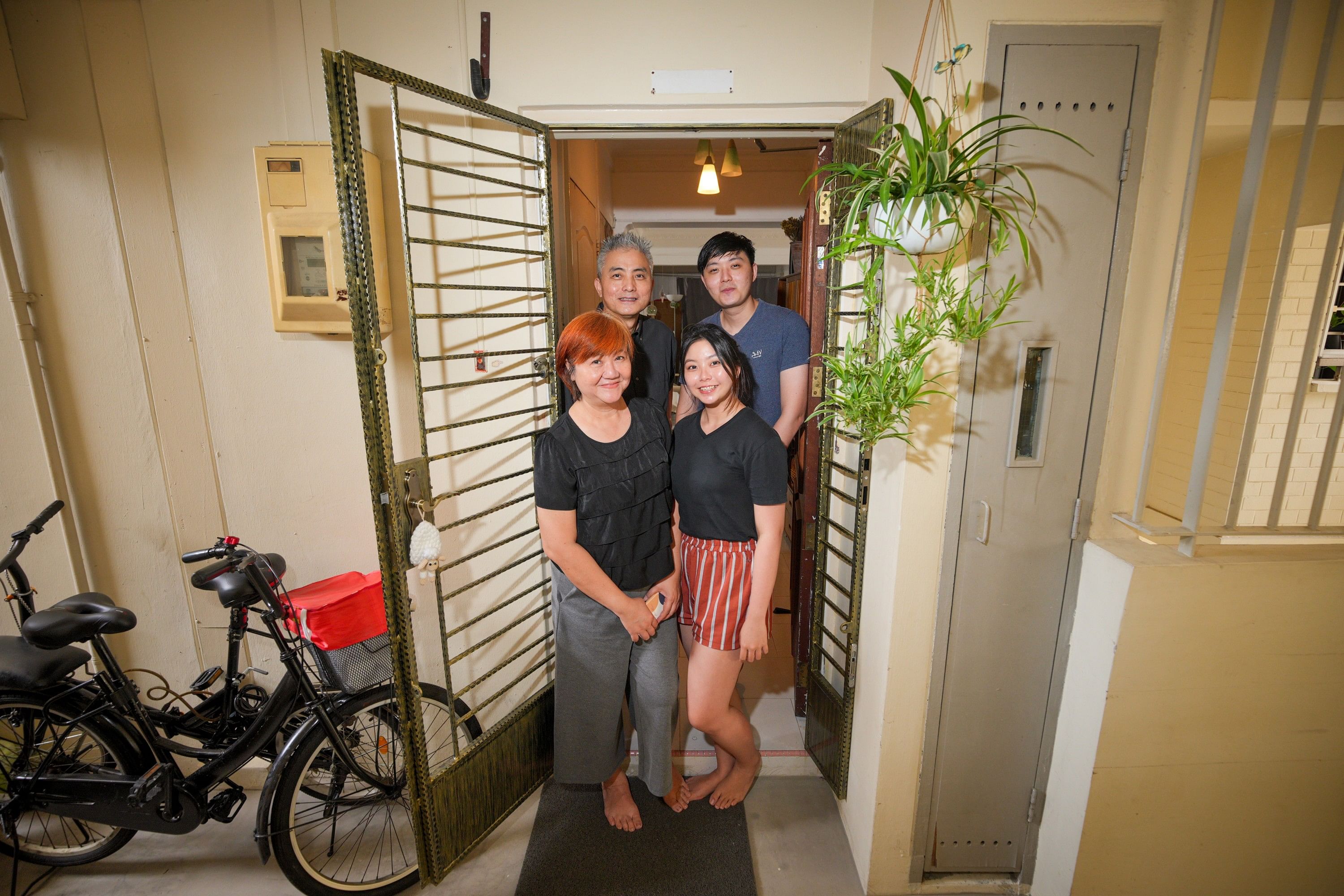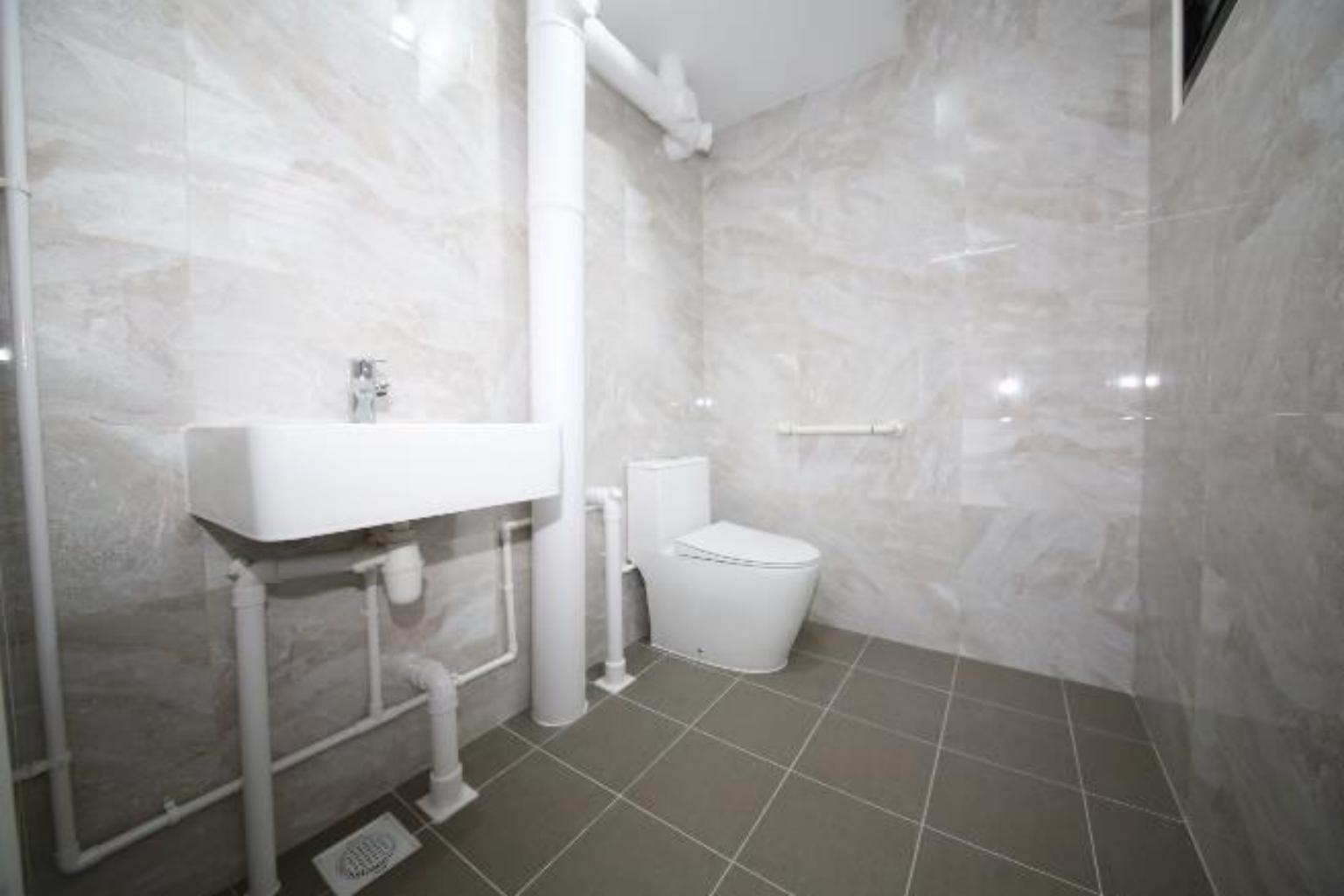Upgrading works slated for 56,000 HDB flats
Sign up now: Get ST's newsletters delivered to your inbox

The Home Improvement Programme has three components - essential improvement items, optional items and enhancements for active seniors.
BT PHOTO: YEN MENG JIIN
Goh Yan Han , Goh Yan Han
Follow topic:
SINGAPORE - More homes will be improved with better facilities and fittings, with a second batch of about 230,000 Housing Board flats built between 1987 and 1997 eligible for the Home Improvement Programme (HIP).
Upgrading works will start first for about 56,000 flats from this group, the HDB said on Sunday (Feb 20).
About two-thirds of the affected households have been asked if they want to proceed with HIP, since polling began in September 2021.
As at Dec 31 last year, all polled blocks had at least 75 per cent of eligible households voting in favour of the HIP - a pre-requisite before works can start. The start of works for the expanded HIP scheme, 15 years after the programme was launched in 2007, comes as HIP works for almost all the first batch of 320,000 eligible flats built before 1986 are reaching completion.
Of this group, about 81 per cent - about 259,100 flats - have completed upgrading works, while another 17 per cent - about 55,100 flats - are in various stages of upgrading, said HDB.
As at March 31 last year, the Government has spent about $3.4 billion on the improvement works for the first batch of flats. The enhancements aim to improve the quality of life for HDB residents, take care of common maintenance problems and address issues related to an ageing population.
The programme has three components - essential improvement items, optional items and enhancements for active seniors (Ease).
The essential improvements, such as repair of spalling concrete or structural cracks, and installation of a retractable clothes drying rack, enhance public health and safety standards and are fully paid for by the Government.
Optional improvement items, such as new entrance doors and gates, are subsidised up to 95 per cent depending on flat type.
The Ease programme, also heavily subsidised, provides elderly-friendly fittings for the homes, such as grab bars, ramps and slip-resistant treatment to toilet floor tiles.
These fittings are also offered separately under a direct application route for residents who need them, or whose blocks do not qualify for HIP.
To enable residents to visualise how the Ease fittings will look in their homes, HDB has introduced an augmented reality feature on the Mobile@HDB app since last July.
Using their digital devices, residents can scan their home with the app, and virtually place and adjust the selected type of grab bars on the walls, or ramps on the floors.

HDB said that more than 255,500 households have applied for Ease, which began in 2012, as at Dec 31 last year.
Of these, about 160,200 opted for it together with the HIP while 95,300 used the direct application route.
The Government has spent about $102 million on Ease as at March 31 last year, said HDB.
Ease was expanded to include ramp solutions for flats with multi-step entrances in December 2018.
These have been installed in more than 3,000 homes as at Dec 31 last year.
Of these, about 1,940 customised ramps and 1,070 portable ramps were installed.
About 2,080 ramps were installed in homes that had applied directly for Ease. The remaining 930 ramps were installed under Ease as part of HIP works.
For Mr Chua Soo Eng's family, whose upgrades to their four-room flat at Chua Chu Kang were completed on Jan 7 after 10 days of works, the improvements have helped.

He moved in more than 20 years ago and lives with his wife, 57, a housewife, their 26-year old son and 24-year old daughter. They decided to upgrade both toilets in the flat with new wall and floor tiles, a toilet bowl, a basin and a grab bar.
Mr Chua, 57, a businessman in the food and beverage industry, said the toilet now looks much neater and bigger owing to a rearrangement of pipes.
Before the upgrade, the toilet wall had small tiles that were 15cm by 15cm. Some of the fillings in the crevices had fallen off while some tiles had cracked. It "looked disgusting and was difficult to wash", he said.

The new toilet bowl is also more water-efficient as it requires less flushing than the old one, which had also started to show crack lines, he added.
The family also opted for a new metal gate for the entrance to their home, with one side of the gate larger than the other. Their old gate had both sides of equal size, which was more inconvenient when carrying large boxes, for example, as both sides then had to be opened, said Mr Chua.
"Overall, the whole family is very happy with it. The 10 days of 'suffering' was all worth it," he quipped.

